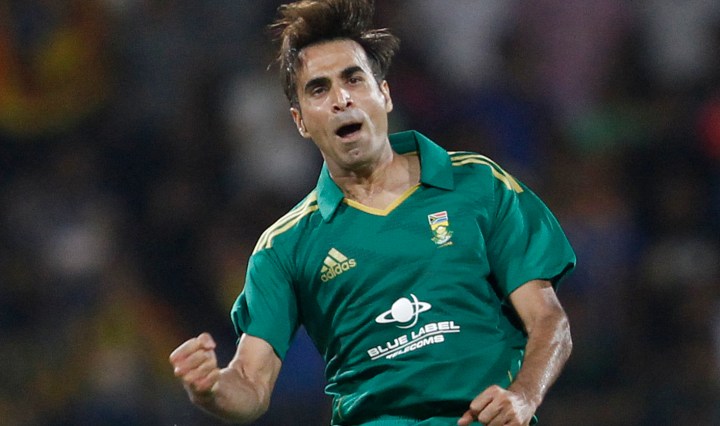Sport
Cricket: Australia’s win exposes South Africa’s underbelly

South Africa’s bowling at the death, and their fragile middle order, was exposed on Tuesday, as they lost their first ODI of the tri-series against Australia. By ANTOINETTE MULLER.
On a rare day of failure for Dale Steyn, where he was whacked for three consecutive sixes for the first time in his ODI career, South Africa came up well short against Australia in Harare. It was the pace ace’s worst set of figures in the one-day format since November 2009, and while those figures will stand out like a sore thumb, South Africa still has far bigger worries.
Bowling at the death and, more crucially, a fragile middle order, showed that South Africa still has a very long way to go before reaching World Cup equilibrium. Imran Tahir, Dale Steyn, Morne Morkel and Ryan McLaren all had a crack at the Rubik’s cube of death bowling, but – how shall we put this? The cube won. South Africa’s bowlers once again looked bereft towards the latter part of the innings. It seems almost incomprehensible that bowlers of Morkel and Steyn’s calibre should be made to look so clueless when asked to do a simple task. Yet the lack of ability when it comes to death bowling has now haunted them for quite some time.
But for all their bowling woes, South Africa have often been able to pull a rabbit out of the batting hat. Hashim Amla and Quinton de Kock, although they failed on Tuesday, continue to impress. AB de Villiers is a freak and Faf du Plessis is owning his spot at number three, and has become one of South Africa’s most consistent performers in all formats in the last few months.
But that is just the top four, and cricket is a fickle mistress. On most days, four players could probably win a team a match, but that would require all four players to come together and pull off something extra special. Failure is expected; that is how sport works. Yet the recipe for success lies in making sure there is a back-up available, even if every single one of the plans fail. South Africa currently lacks backup in both the middle order and the lower order, as they struggle to find an identity for their one-day side.
Duminy, although growing in stature at Test level, has not scored a half century in one-day cricket since last year. He has not passed 36 in his last 11 innings. Miller has showed signs of becoming the complete player everyone believes he will be. However, he has once again not lived up to the hype. Both have the makings of great players, but neither have come to the party when it has really mattered. South Africa has plenty of time to correct this malaise, but that will take some bold manoeuvres from the selectors.
Of equal concern is the long tail. Ryan McLaren, useful as he is as a bowler, is not exactly an all-rounder. This makes for a fragile lower order and disrupts the balance in an era where one-day cricket is rapidly changing its identity. The culmination of players struggling for form as well as a long tail has finally exposed that unticked box that South Africa has been able to mask up until now.
With Miller, the last recognised batsman, and McLaren in at seven, the composition of South Africa’s one-day team is looking as solid as butter left out in the sun. McLaren needs to be seen as a bowler who can bat a bit, and using him in place of one of the front-liners or the all-round option needs to be thought about again.
The good news for South Africa is that they have a domestic season, a one-day series away in Australia, as well as a one-day series at home against the West Indies, to find a better balance. Unlike other teams, like England, they are not in complete disarray. What is most impressive about South Africa’s line-up is that, unlike some other sides, their Test players seemingly cross over to the limited overs format without much effort. This only highlights the wealth in talent, but should not cover up the areas in which they are weak.
Not many one-day teams currently “tick all the boxes”. In Australia, pitches are likely to be faster and more suitable for South Africa’s fearsome attack, but that will only serve to highlight the lack of batting power even further, especially if the quicks they play against are having a good day at the office.
South Africa has one more match against Zimbabwe and should make the final of the tri-series against Australia on Saturday. The only way they can be out is if Zimbabwe beat them by a bonus point and the hosts significantly improve their run-rate. While big changes are unlikely for the next two games, it will be back to the drawing board when the side heads home and begins preparing for a trip to Australia in November. DM
Scorecard summary:
Australia 282 for 7 (Marsh 86*, Hughes 85) beat South Africa 220 (Du Plessis 126, Marsh 2-23) by 62 runs.
Photo: South Africa’s Imran Tahir celebrates taking the wicket of Sri Lanka’s Lahiru Thirimanne during their first Twenty20 match in Colombo August 2, 2013. REUTERS/Dinuka Liyanawatte



















 Become an Insider
Become an Insider